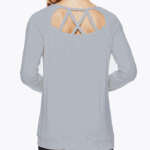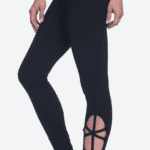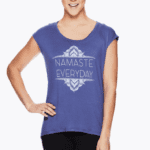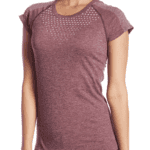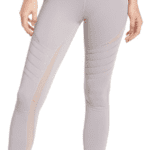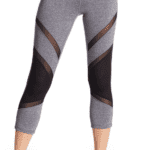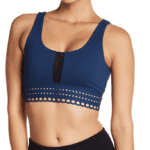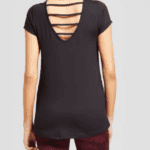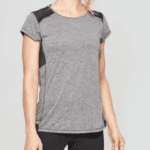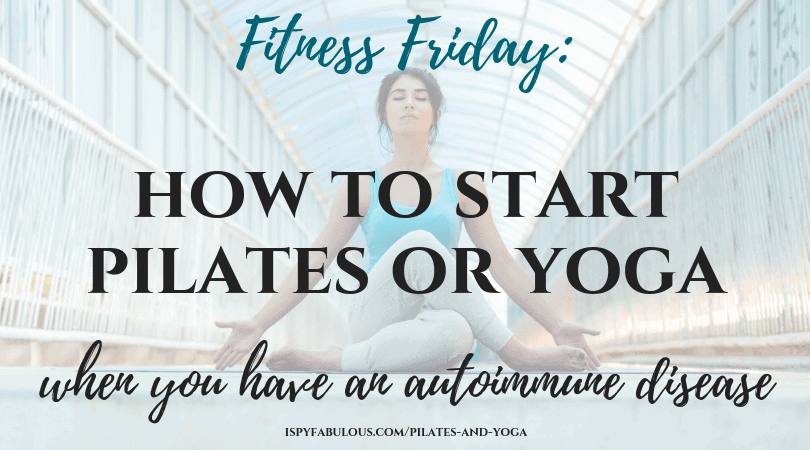

Starting a new exercise program is a whole different ballgame when you’re struggling with chronic pain, chronic illness, and/or an autoimmune disease.
I know, because I’ve started many exercise programs over the years – both before and after being diagnosed with two autoimmune diseases.
Ah, I can still remember the good ol’ days of weight lifting and working out hard with trainers when I wanted quick, noticeable results. Or, the joy of running for miles and still being able to walk the next day. I used to be in great shape and had all the energy in the world to live life like I was on a bullet train.
The Struggle Is Real…
But, although trying to work on your fitness is a struggle before you heap on additional challenges, the good news is that you can and you should make time to move – even when you have a chronic illness.
In case you’d like to read more detail on the broader scope of weight loss when you have an AD, I wrote a longer post last week where I explored How To Lose Weight When You Have an Autoimmune Disease.
So, today I am going to just zero in what you can do to successfully start a pilates or yoga practice in your life.
1. Background of Pilates:

Pilates was developed by Joseph Pilates to train both the body and the mind. The concept was born from his efforts to rig hospital bed springs in order to build strength in bedridden patients. This led to the eventual design of what is now called the reformer machine. His concept gained notoriety when professional ballet dancers would use his method to strengthen their bodies and improve their skills.
Pilates continued to gain popularity and more and more studios were opened. Now, even though the reformer machines look like strange torture devices at first glance, the benefits of a pilates practice are being recommended to everyone for everything from a way to recover from injury to reducing chronic pain.
2. Benefits of Pilates and Yoga:

I talk about why pilates is such a great workout in my earlier post, but I’ll quickly share here. If you’re able to go to a pilates studio, you perform most of the exercises lying down on a reformer machine. This allows you to fully isolate the muscle being worked, without the added pressure of gravity bearing down on you. For those of us with chronic pain, this is a gamechanger. We can work out longer, harder, and therefore see more results.
For me, regularly practicing pilates and yoga has improved my daily pain level and significantly reduced some nagging, joint pain in areas like my right shoulder.
Prior to starting pilates just a few months ago, I had to put heat pads on my right shoulder every night and lived with a pain in my shoulder that was so distracting, I asked my doctor to get x-rays. But, sure enough, it was just another symptom of the dreaded companion of autoimmune diseases – inflammation.
Now, less than three months after starting pilates a few times a week, I have no shoulder pain most of the time.
This is just one example of the many ways that starting pilates has improved my quality of my life.
Like I mentioned last week, starting pilates and yoga is really my #1 piece of advice for others who are struggling with chronic pain and autoimmune disease, but want to gain strength, increase balance and mental acuity, and manage their pain.
3. Before You Get Started:

As with any change in your diet or fitness program, particularly when you are already struggling with preexisting health conditions – always check with your medical team first and get their stamp of approval.
While I am a research junkie, I am not a medical professional. I am sharing my experiences in the hopes that they may lead readers to find answers that work for them, but I am not responsible if any of my advice should adversely affect your life or health. Please, please, always seek out the advice of trusted medical practitioners who are well-versed on your situation.
After you’ve ensured that beginning pilates and yoga practice is safe for you – the next step is preparing yourself mentally for this new journey.
It’s time to take a moment to say goodbye to how your body used to respond to exercise pre-chronic pain, and accept that this is a new journey that will probably have a difference cadence.
- You will need to listen to your body and follow its lead.
- When something hurts, stop.
- If you are too tired or struggling with more pain than usual, skip class that night.
- Don’t get angry with yourself if you cannot use the same weights you used to or cannot complete every rep of every exercise.
- You WILL get stronger over time – but only if you keep doing it. And, if you torture yourself and make it too painful – physically and mentally – that is probably not going to happen.
This is a new day. Accept that this is your current condition. You’ll only see results if you keep trying.
4. Getting Started:
Decide what works best for your budget and lifestyle – either working out at home using a DVD or going to a studio. For me, I am home with little ones all day, so the only time I get for myself is the time I go to a class. There have been seasons where I did not have access or the time/income to go to a studio.
Finding a Studio:
Personally, I go to a Club Pilates studio. There are many franchises similar and even one-location studios that may even offer better prices. Google studios in your area. Read Yelp reviews. Do the free trial class. Look at their schedule of classes and make sure it works for you.
For example, I went with CP because they have classes late into the evening, which is the only time I can go. If my schedule was more flexible, I would’ve chosen a location closer to home.
Working Out At Home:
There have been many years when working out at home was my only option. Here are some DVDs that I have enjoy and have high reviews:
5. The Gear To Succeed:
Alright, we are ready to talk about what you need to get started.
Luckily, pilates and yoga are two of the easiest exercise programs to start – because you could really begin with any lightweight, comfortable clothing that allows you to move. Leggings, lightweight t-shirts, etc.
Pilates Activewear:
If you’d like to pick up some clothing that is designed for this type of exercise, I particularly like Gaiam and Zella brands. Target also has some of the best types of sports bras and tops with their Champion line.
If you’re going to spend money on something – choose the pants. You need these to move with you, wick away moisture, not roll down or suction cup against your stomach, and retain their shape when you wash them.
I find great deals on Gaiam on their website or online at Kohl’s.
Right now, Gaiam is offering a Pre-Black Friday Deal online – 20% off with code STARTSAVING and Free Shipping over $50!
Zella can be pricey on Nordstrom, so check the sales section here. Also, I’ve found Zella on Nordstromrack.com and never noticed a different in quality. I will say I have more issues with Zella waists rolling down than Gaiam, though – just a note for curvy girls.
Usually, since you are laying on the reformer carriage quite a bit – you’ll want a shirt that covers more of your back. Personally, I don’t like the feeling of the cold carriage. Tops like these are my favorite. All from Target and under $20. SCORE.:
Pilates Socks:
You’ll need some pilates socks. These have a super grip on the bottom that allow you to hold on to the bar at the end of the reformer machine when doing bridges and other exercises.
While there are a lot of great options you can find here, the best pilates socks that will really help you hold position and will also last a really long time is ToeSox.
These socks feel funny if you’re not used to things between your toes (I’m not), but you actually will notice a difference than when you wear socks that have a rounded toe.
With a million color options and range of prices, you’ll be sure to find something that works for you:
WAGS Gloves:
If you have joint pain – you may very well be feeling it in your hands and wrists. I know I do. This can feel so frustrating and limiting – because these small muscles will fatigue so much faster than the larger ones, making it difficult to get a good workout in.
This is also why weight lifting is pretty much out of the question.
Luckily, someone designed a solution – and the WAGS gloves are pretty much the industry standard for how to handle this. They have a gel pad around the areas where you will be putting weight, alleviating any direct contact with your hand. If your hand is supported, you won’t put as much pressure on your wrist, and this will buy you time before it fatigues.
I would really recommend investing in some kind of glove for yoga and pilates – particularly WAGS – if you want to give yourself the best chance of success. Here’s one highly rated pair on Amazon:
6. Going To Class:
Now that you look ready – it’s time to go to class. Luckily, a pilates or yoga studio is going to have everything that you need for the class.
If you’re working out at home, check the supplies that your DVD requires and pick those up, too.
Here are some of the pieces of equipment your class may incorporate to make the workout more challenging. Although, even with the use of this equipment, pilates stands by the “No Pain” philosophy. You may feel some muscle fatigue, but you should never have that debilitating muscular pain or strain common with other types of workouts.
7. Stay Hydrated:
Please remember to drink water. Exercising helps to flush toxins from our bodies – and if you have an autoimmune disease, your body is especially struggling to do that.
Drink water before, during, and after your workout to help your body detoxify. And, remember to shower after class so your body doesn’t reabsorb whatever it’s sweat out.
Here are some of my favorite reusable water bottles that keep water cold for a long time:
****
That’s all, folks! I wish you all the best on your path to wellness. Hopefully you found something here that will help you.
If you have more to add, please leave me a comment below.
Have a fabulous day,
E



